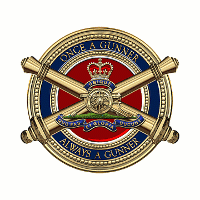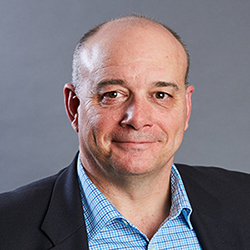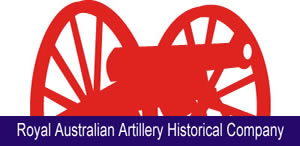On the 10th of January, Ken and his unit left Pyrmont Wharf in the first convoy of battleships, cruisers and destroyers of both the British and Australian Navy’s. The convoy passed through Ceylon, then the Suez Canal where the regiment disembarked and travelled overland by train to their camp at Kantara in Egypt, arriving on 12 February 1940. They then moved on to Palestine and commenced training again with their first regimental shoot on the 1st of May.
After Italy declared war on the 11th of June, Ken’s unit gave up their field guns to the 2nd/4th Field Regiment and took on an anti aircraft role with Bofors guns and after initial training in Haifa, the regiment became the first Australian artillery unit in action during the war. In July, the Regiment was again issued with 18-pounders and 4.5-inch howitzers and reformed as a Field Regiment. The regiment was eventually issued with 25-pounders and after extensive training the Regiment deployed on operations to the Western Desert in December 1940.
During this time Ken and his mate Doug Hillcoat managed to sneak away for a short stint of unscheduled R and R in Alexandria but on return was charged with AWOL and Ken spent seven days confined to barracks - a very common occurrence for Australians in North Africa.
Ken and his regiment were involved in the attack on Bardia with their 25 Pounders and were part of a 118 gun assault on the Italians there. Later, By April 1941, Ken had deployed to Greece with his regiment as part of the 6th Australian Division. It was in Greece that the Australian gunners were presented with the new experience of sustained attack by German tanks and dive-bombers. The regiments were involved in a substantial withdrawal strategy in the face of advancing German Panzer attacks. In April 1941, the regiment’s Commanding Officer, Lieutenant Colonel Harlock and about 70 members of the regiment were captured near Kalamata. The regiment was broken up to facilitate an evacuation from the port of Kalimatta. Elements of the regiment returned to North Africa and Ken eventually returned to Australia in 1942 after two and a half years overseas. Ken at this stage had been promoted to Bombardier. His unit sailed into Melbourne in August 1942 and they were transported straight to a camp at Seymour.
Ken’s stay in Australia was short lived and after only five days he was off to Port Moresby in New Guinea. They sailed from Brisbane on the American Liberty Ship “Joseph Lane”. On arrival in New Guinea, Ken was promoted to Sergeant. While waiting to be sent forward with his regiment Ken took the opportunity to fly with the ‘biscuit bombers’ that provided supplies to Australian forces in the Owen Stanley Ranges. In December 1942, Ken served with his regiment during the Battle of the Beachheads. His strongest memory of the war was the relentless hard physical labour of being a gunner, carrying ammunition and other heavy loads which frequently reduced his battery members to exhaustion. As testament to the amount of ammunition required to be moved, E Troop (Bullforce) of the 2/1st Field Regiment fired 17,774 rounds during the eight weeks of the Buna-Gona campaign, supporting both American and Australian forces.
In mid January, 1945 the 2/1st Field Regiment had deployed to Aitape, on the north coast of New Guinea. Ken and the regiment were involved in the attack on Wewak in May of 1945. The Australians had lost 442 killed or died of wounds and 1,141 wounded during this campaign. Kens 2/1st Field Regiment had lost six killed and 24 wounded. Countless others, like Ken suffered from the effects of Malaria, tonsillitis hookworms and tropical ear. Like so many other gunners, Ken also suffered hearing issues from earlier bouts of tropical ear. At one stage in Greece during an air raid, he was thrown against a vehicle and concussed suffering a severe ear injury.
At the completion of the war, Ken discharged from the Army on the 12th of October 1945. His discharge certificate records 2,171 days effective service with Active Service within Australia of 567 days and outside Australia of 1,536 days. After discharge, Ken did a stint with the Fire Brigade based in the city and Stanmore until 1950. With the onset of the National Service scheme, Ken re-enlisted in the Army and was posted as an instructor initially at Middle Head and then with 12 National Service Training Battalion at Holsworthy. He was late posted to 111 Light Anti Aircraft Battery at Middle Head. Sid Penhaligon reports that he and Ken “car pooled together, shared a tent together on a four month exercise to Mackay and roomed together at North Head Barracks, Manly, on our return from Mackay”. Sid went on to say “Ken was one of the finest soldiers I had ever known. It was a privilege to have known him”.
John Macpherson remembers Ken from his days as Platoon Commander with D Company 12th National Service Battalion. “As the Company Sergeant Major of D Company he stood out as the epitome of drill, dress and deportment: a trusted adviser to (very) young subalterns, and a fair but firm master of the parade ground and gun park. He was also a good cross country runner, and was coach of the several Battalion Cross Country teams for which I was responsible in 1956/57”.
He performed instructional duties with National Service and Officer Training Units for 11 and ½ years. He was also posted to Duntroon providing Artillery training to cadets for 3 and ½ years. Nick Floyd recalls an event at Duntroon when “a large hedge maze was ordered to be removed by the Commandant because the cadets were perceived to be ‘up to no good’. Ken, and a few others, replanted the hedge and took great delight in watching the Commandant scratch his head each morning as the hedge maze began to grow back”. Ken was then posted to Army Headquarters in Canberra for 18 months.
In 1953 Ken was selected as part of the Australian Coronation Contingent to go to England. The contingent was away from February to August and involved with many ceremonial activities including a stopover at Tobruk on their way to England on the HMAS Sydney. According to fellow Coronation Contingent and Royal Guard Member Gordon Robson, “Ken was regarded as one of the best drill sergeants in the Australian Army and was an obvious choice to make the journey.” In addition to marching in the Memorable Coronation Procession, the Australian Army Group, Ken was greatly honoured by the Queen in being given Royal approval to stand as Royal Guard at Buckingham Palace while the Queen was in residence. This was the first occasion a Commonwealth Military Unit had been granted such an honour. Ken was one of the first chosen to join the guard and was further honoured by being selected as the Guard Sergeant. Gordon went on to say, “As a respected member of the contingent, Ken was held in high regard by all who knew him”. Ken made many lifelong friendships during this tour of duty and was a frequent attendee at their reunions. Ken also took the opportunity to catch up with his brother Arthur and his wife pat and young son Peter who was based in England at the time.
Ken spent some 16 years in this his second stint in the Army. He was promoted to Warrant Officer Class II on the 16th of July 1958 and discharged in Sydney on the 21st of July 1967.
In November 2012, Ken was chosen as one of only eight ex soldiers to participate in a commemorative tour of New Guinea. It was the 70th anniversary of the Kokoda and Beachhead Battles. http://images.defence.gov.au/20121103adf8266070_184.jpg This trip gave Ken an immense amount of pleasure even though it was a difficult decision for him to go as his second wife Jean was critically ill. It was her who insisted that he go. This trip for Ken was the opportunity of a life time to return to the place where many difficult memories were buried in his soul. As with many returned soldiers, we know that Ken harboured many demons from his war time experiences.
Ken met his first wife Mavis at a dance at the Trocadero in Sydney and they were married in 1947. The first of their three daughters Jan was born in 1951 followed by Prue in 1952 and Linda in 1956. Like many defence families they moved from married quarter to quarter following the various postings. The children have fond memories of their time at Duntroon. The swimming pool, theatre and the bush surrounds were all elements the children enjoyed. Ken would busy himself when not at work by setting rabbit traps, or making pet cages or cubby houses for the children. Ken’s idea of babysitting his three daughters was to take them to the gun park and they all became very proficient in raising and lowering the barrels on various guns. Ken also encouraged the girls to become good competitive swimmers and early mornings were often spent doing laps in the Duntroon pool. The girls were so glad when it closed for the winter.
Ken was an active sportsman himself. In his early years he was a keen and successful marathon runner, an amateur boxer and a keen swimmer. In 1951, Ken and Sid Penhaligon were both training for the Interservice Athletics at Moore Park in Sydney when both their wives were admitted to the same hospital for childbirth and Jan was born on the 29th of March. During his time at Duntroon, Ken played Rugby for the college, until at age 45 he was persuaded to retire with ongoing concerns for his health. After rugby, Ken turned to golf and was integral in the development and building of the RMC Golf Club. Ken continued his love of golf after retirement from the Army in 1967. He continued playing at many clubs around NSW and was an active committee member on many and Captain of some.
After retirement from the Army, Ken moved the family to Macquarie, a new suburb in Canberra. Ken turned his hand to a variety of occupations. He had bread run, became a swimming pool manager and also a postman. He then completed a horticulture course and won contracts doing the lawns of the Embassies and the Woden Valley Hospital until his retirement. Ken and Mavis divorced in 1977 and Ken remarried and moved away from Canberra. After moving at least seven times, Ken and his new wife Jean settled in Forster. Kens contribution to the community continued and he would always answer the call in the role of secretary or treasurer of some organisation. He became very active with the RSL and the National Serviceman’s Association. His true depth of character showed in the care and devotion to his ailing wife Jean. There was not a day went by that he was not tending to her many needs prior to her passing in 2012.
Ken was a loving father and grandfather and had one last visit to Canberra at Christmas in 2012. He had the opportunity to visit old haunts and remember good times. He was also finally able to spend time with his grandchildren Kasey and Sam. He had also found a new friend and loving companion in Elizabeth. Alas he was not able to spend too much time with her and Ken died in Forster on May 10 2014. Ken’s funeral service was held at the Manning Great Lakes Memorial Gardens Chapel, in Taree on the 16th of May 2014.
Nick Floyd recalls: “Ken will be remembered for his kind and gentle nature, and his willingness to lend others a hand, particularly in times of hardship”.
In her Eulogy at Ken’s funeral, Jan said: “if you look up a definition of goodness it is about character, integrity, honesty, kindness, generosity, moral courage and the like. Ken had all this and more. He was a proud Australian and we could not have been more proud of Ken”.
Acknowledgements:
• Special thanks to Jan Kell for her Eulogy of Ken and for sending me so much valuable information especially Kens autobiography.
• John L Macpherson.
• Lieutenant Colonel Nick Floyd.
• Sid Penhaligon.
• David Horner, author of ‘The Gunners’.
• Gordon Robson.
• Ken Kell Autobiography – The Early Years.
|








